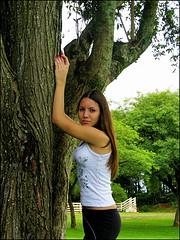 The important one is not to leave our auto-esteem to go on account for the foot of the indetermination and the lack of comprometimento of the masculine sex. - We have to like our proper company, son. To learn to like same us is a great step to leave of wanting to understand the head of the men. They are made of another material, of another species. Our happiness cannot depend on them or a serious relationship. Millions of things exist make that me happy and while my namoros not to avenge, I go having fun themselves with them. Until my mother was good of advice (REBOUAS, 2004, P.
The important one is not to leave our auto-esteem to go on account for the foot of the indetermination and the lack of comprometimento of the masculine sex. - We have to like our proper company, son. To learn to like same us is a great step to leave of wanting to understand the head of the men. They are made of another material, of another species. Our happiness cannot depend on them or a serious relationship. Millions of things exist make that me happy and while my namoros not to avenge, I go having fun themselves with them. Until my mother was good of advice (REBOUAS, 2004, P.
144 and 146) With such ranks, importance of this workmanship for the construction of the feminine identity of adolescents is distinguished it, being source of study and analysis for other researchers. Valley to consider that, in the words of (DUARTE, 1990 P. 73) For who as much time he was absent as subject of the history, reduced to an inferiority sidewalk in its biological condition, at the mercy of of ideologies placed that it as as a sex and of the masculine cultural industry that if crystallization almost puted in charge of the construction and them images feminine it, is not easy to recoup the time and to reconstruct this identity. A workmanship as this, demonstrates to the advances reached for the feminine writers and the light in the end of the tunnel of the way that still is had to cover. FINAL CONSIDERAES: Considering that the identities also are constructed through the literary compositions in a place of cultural production, as articulation space, must translate the differences, leaving of the beginning of that, invariably they affect and they form. In other words, it is important to be intent to the meanings that the literary compositions bring, therefore they construct the identities or they produce the inserted differences in the imaginary human being. Thus literature, as it disciplines humanistic, favors the construction of the identity.
The vision of the reading of feminine workmanships did not have no pretension in deciding the problems in relation here, nor so little to determine this paper for literary education. The main concern was to try to understand the process that makes the linking enters the interest of the young for literature and the probable possibilities to take for its lives spaces of free performance of aviltantes looks of slaughter and subjugation. In the book the scienter of the author of the feminine representation can be observed ahead, presented through the narrative that makes solid the cultural standards it transforms and them in markers of well coherent the feminine aesthetic and cultural standard with the present time. Bibliographical references: BONICCI, Thomas & ZOLIN, Lucia Osana. Literary theory: Boardings Histories and Trends Contemporaries. Maring, EDUEM, 2009. DUARTE, Constancy Rasps. Literary feminine and critical literature. In: GAZZOLLA, Ana Lucia Almeida (org.) The woman in literature. Belo Horizonte: UFMG. 1990. P. 70-79. PARROT, Guacira Lopes. Sort, sexuality and education: a perspective after-estruturalista. Petrpolis: 1997. REBOUAS, Thalita. It speaks serious, mother! Rio De Janeiro, Rocco, 2004. SCHWEICKART, Sponsorship P. Reading ourselves: toward feminist theory of reading. In: RICHTHER, David H. Conflicting views on reading literature. Boston: Bedford Books of St. Martin? s Press. 1994. P. 269-278. TIBURI, Mrcia. /MENEZES, Magali M. of. /EGGERT, Edla. (Orgs.) The women and the philosophy. They are Leopoldo: Publishing company UNISINOS, 2002.